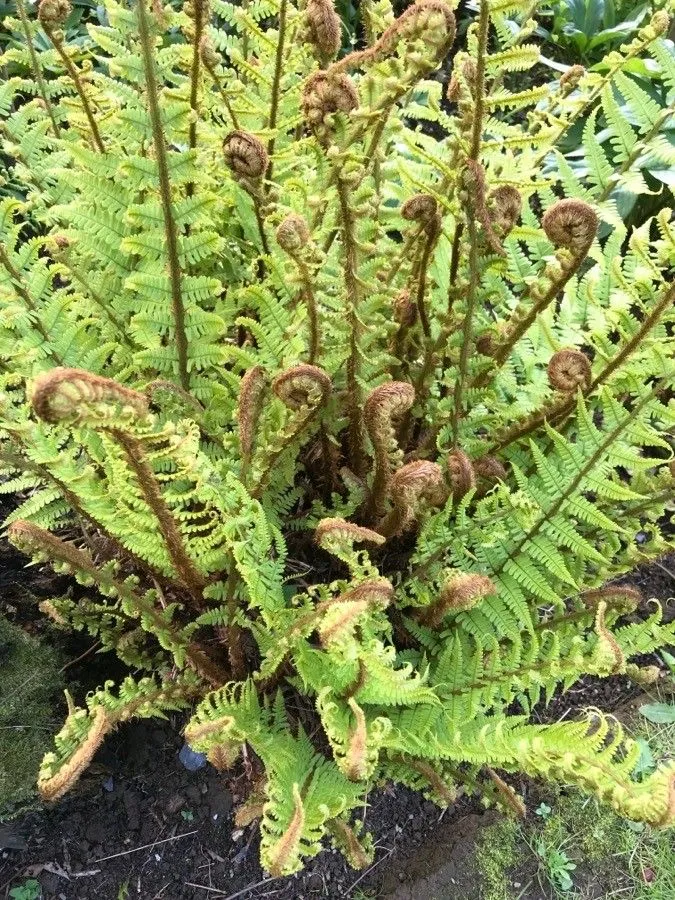
Author: (L.) Schott
Bibliography: Gen. Fil.: t. 9 (1834)
Year: 1834
Status: accepted
Rank: species
Genus: Dryopteris
Vegetable: False
Observations: N. Finland to Russian Far East and Korea, N. & C. Japan, Subarctic America to N. U.S.A.
The Fragrant Wood Fern, scientifically known as Dryopteris fragrans, is a resilient and aromatic member of the Polypodiaceae family. First documented in the early 19th century, it was acknowledged in the “Gen. Fil.” tome in 1834, credited to the botanist (L.) Schott. This fern stands out not only for its hardy nature but also for its unique aroma, which contributes to its common name.
The Fragrant Wood Fern can be found spanning a wide geographical range. Its habitat stretches from Northern Finland through the vast expanses of the Russian Far East and Korea, extending into the northern and central regions of Japan. In North America, this fern thrives in subarctic conditions, reaching down to the northern regions of the United States. Its robust nature allows it to survive and flourish in these diverse and often harsh climates.
Dryopteris fragrans is a notable example of a plant that has adapted well to various environments, displaying a significant ecological versatility. The fern is often observed in rocky crevices and on cliff faces, where it can anchor itself securely and take advantage of the nutrient-rich yet often precarious substrates.
In addition to its geographical and ecological resilience, the Fragrant Wood Fern is cherished for its aromatic qualities. The scent, which is especially perceptible when the fronds are dried or crushed, adds an additional layer of appreciation for botanists and plant enthusiasts alike. This unique characteristic makes it a popular choice for naturalists interested in plants with distinctive, pleasant smells.
Overall, Dryopteris fragrans stands as a remarkable species within the Polypodiaceae family, celebrated for its hardy adaptability, wide distribution, and delightful fragrance. This plant not only enriches the biodiversity of the regions it inhabits but also offers a sensory experience that connects nature lovers to its subtle yet enchanting presence.
Eng: fragrant wood fern, fragrant woodfern, fragrant-cliff fern, fragrant cliff fern, fragrant cliff wood fern, fragrant fern, fragrant shield fern
Swe: doftbräken, tuoksualvejuuri
Fra: dryoptère odorante, dryoptère fragrante, dryoptéride odorante
Fin: tuoksualvejuuri
Nno: dufttelg, lukttelg
Nob: dufttelg, lukttelg
En: Fragrant wood fern, Fragrant-cliff fern, Fragrant woodfern, Fragrant cliff fern, Fragrant cliff wood fern, Fragrant fern, Fragrant shield fern
Zh: 香鳞毛蕨
Fi: Tuoksualvejuuri
Fr: Dryoptère odorante, Dryoptère fragrante, Dryoptéride odorante
No: Dufttelg
Nb: Dufttelg, Lukttelg
Nn: Dufttelg, Lukttelg
Os: Адджинаг
Ru: Щитовник пахучий
Sv: Doftbräken, Tuoksualvejuuri
Taken Feb 14, 2020 by Élodie Hoarau (cc-by-sa)
Taken Feb 22, 2020 by g nelson (cc-by-sa)
Taken Feb 13, 2020 by Isabelle Bellin (cc-by-sa)
Taken Feb 13, 2020 by Isabelle Bellin (cc-by-sa)
Taken Nov 9, 2021 by William Coville (cc-by-sa)
Taken Jan 1, 1900 by EOL − Superior National Forest (cc-by)
Taken Apr 25, 2020 by giuditta castioni (cc-by-sa)
Taken May 22, 2021 by Glyn Davies (cc-by-sa)
Taken Apr 15, 2020 by Michael Papst (cc-by-sa)
© copyright of the Board of Trustees of the Royal Botanic Gardens, Kew.
Growth habit>: Forb/herb
Family: Myrtaceae Author: (F.Muell.) K.D.Hill & L.A.S.Johnson Bibliography: Telopea 6: 402 (1995) Year: 1995 Status:…
Family: Rubiaceae Author: Pierre ex A.Froehner Bibliography: Notizbl. Bot. Gart. Berlin-Dahlem 1: 237 (1897) Year:…
Family: Sapindaceae Author: Koidz. Bibliography: J. Coll. Sci. Imp. Univ. Tokyo 32(1): 38 (1911) Year:…
Family: Asteraceae Author: A.Gray Bibliography: Pacif. Railr. Rep.: 107 (1857) Year: 1857 Status: accepted Rank:…
Family: Fabaceae Author: Medik. Bibliography: Vorles. Churpfälz. Phys.-Ökon. Ges. 2: 398 (1787) Year: 1787 Status:…
Family: Aspleniaceae Author: (Cav.) Alston Bibliography: Bull. Misc. Inform. Kew 1932: 309 (1932) Year: 1932…